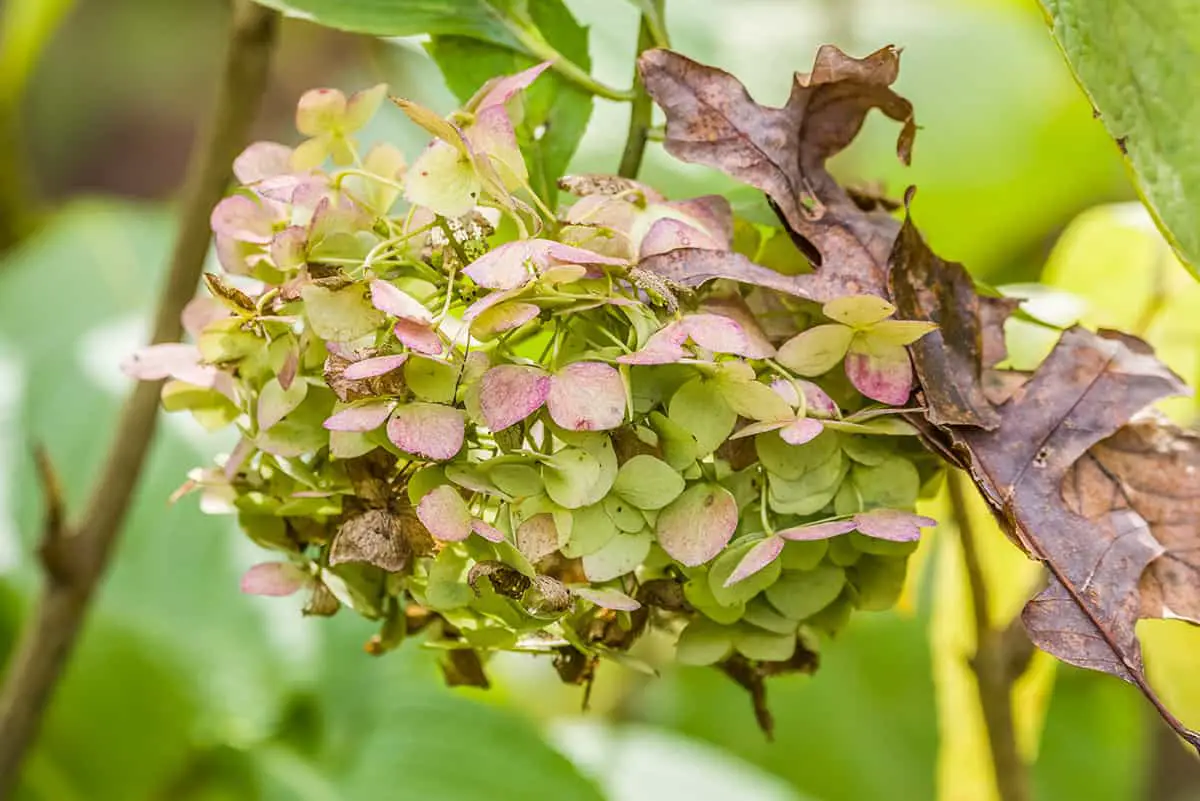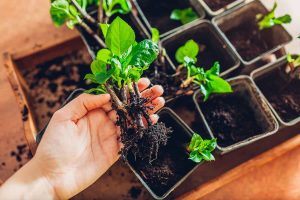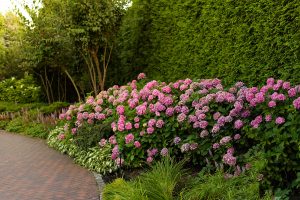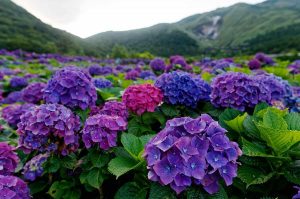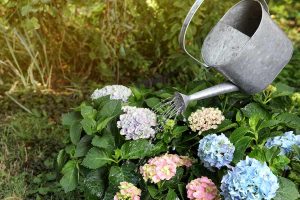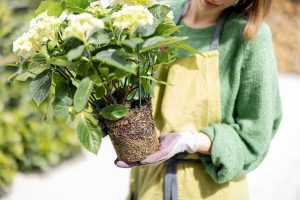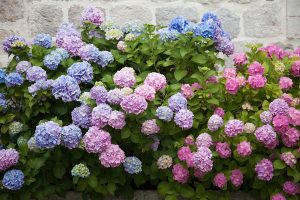Hydrangeas are stunning plants that can look absolutely spectacular through spring and summer, but they can also be quite temperamental.
A common issue with hydrangeas is leaves or flowers turning brown, and in these instances, you need to identify the problem in order to resolve it.
For brown leaves on your hydrangea plants, these can be the causes – fungal disease, water shortage, scorch, shock, and over-fertilization. For brown flowers, this may be due to the time of the year, and lack of moisture.
Here we look at the various factors that can cause hydrangeas to turn brown and die back, and what it is you can do about it.
Table of Contents
Brown Hydrangea Leaves
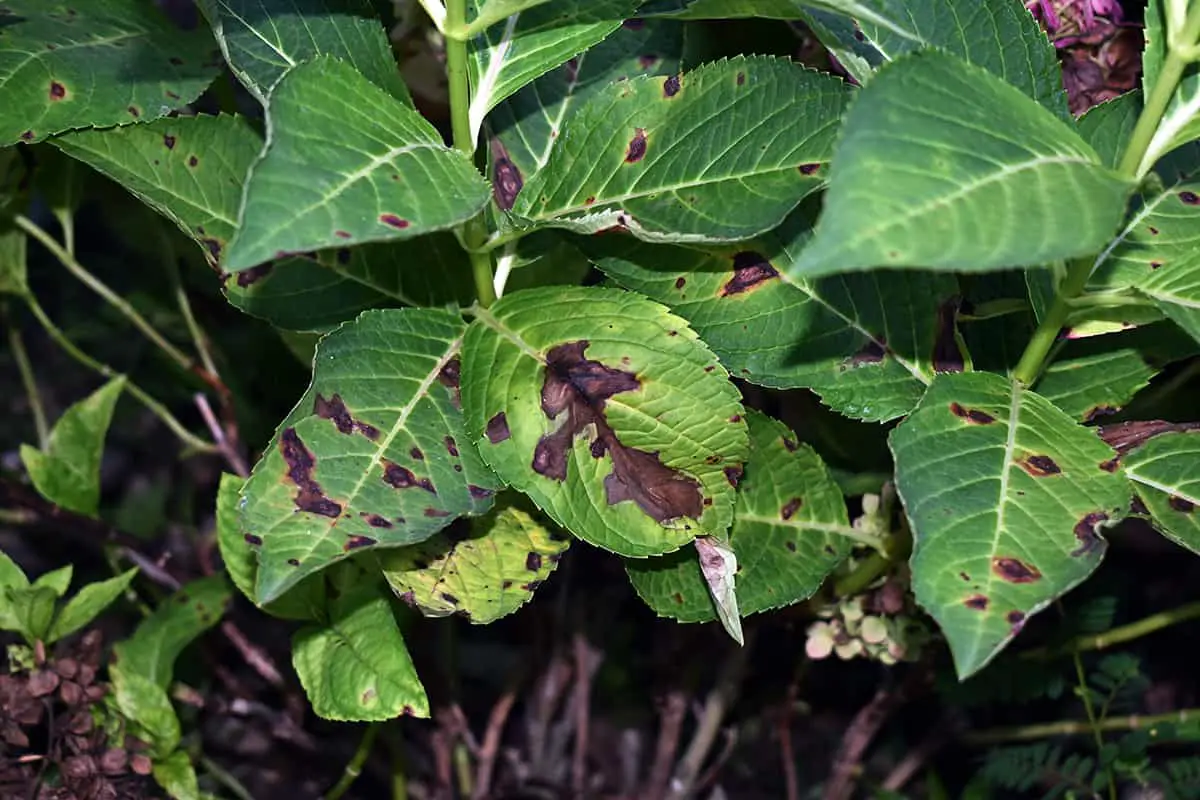
Fungal disease
Brown leaves that are dying back are a telltale sign of a fungal infection but don’t be too quick to assume that you have a fungal problem on your hands. It’s easy to recognize a fungal infection if you know what you’re looking for. This type of issue will present as brown marks on the leaves of the plant.
They may look like pockmarks, and in some cases, the marks can be yellow and brown rather than just brown. In the event that you have been diagnosed with a fungal disease on your hydrangea, you should remove all of the infected parts of the plant, and dispose of them carefully. Be sure to wash all of the equipment you have used to avoid cross-contamination.
Spray the rest of the hydrangea with a fungicidal treatment, to get rid of any lingering fungus that you may not be able to see. As long as the fungal disease has not caused damage to all of the leaves on the plant, it stands a good chance of surviving and returning to full health.
If you have had to prune a lot of the diseased stems from the plant, your hydrangea may struggle to bloom the following season, depending on whether you have an old growth or new growth flowering variety. Once the plant has recovered, blooming will commence once again.
Lack of water
Hydrangeas need plenty of moisture to survive and should be grown in soil that is consistently and evenly moist, but not wet. If you have not been watering your hydrangea frequently enough, for example, if you have been on vacation, then you may notice that the leaves are turning brown and dying back.
When there has been a lack of moisture, it will be the tips of the leaves that turn brown first, and the rest of the leaves will follow. This problem is easy to identify by simply checking the condition of the soil. Dip a finger a few inches down into the soil, and if you do not feel any moisture then the plant can be diagnosed with a lack of water.
Fix this by watering the hydrangea more often, and be sure to do so thoroughly and deeply so that the water does not just remain in the top few inches of the soil.
Scorch
Most hydrangeas love sunlight, but when temperatures soar, for example on summer afternoons, the leaves can suffer from scorching. This occurs when the leaves simply got more hot than they like, and it is more common in hydrangeas that have not been given enough water.
You can help to prevent scorch by positioning the plant in an area where it will be in the dappled shade during the heat of the afternoon.
Shock
Hydrangeas can be fussy about being transplanted, so it’s best not to move them once they are established. However, if you have recently repotted your plant and have found that the leaves have since turned brown, then a shock is the likely cause.
Take care when repotting to prevent shock, by being especially careful with fragile roots, and watering generously once the hydrangea is in its new pot. Most cases of shock from repotting hydrangeas are related to a lack of moisture. Plenty of water is necessary for a repotted hydrangea to acclimatize to its new home.
Over-fertilization
Hydrangeas can benefit from fertilizer, however, you should err on the side of caution, since using too much fertilizer, or fertilizing the plant too frequently, can cause the leaves of the plant to turn brown and die back. When leaves turn brown as a result of too much fertilizer, this is referred to as fertilizer burn.
You can avoid this by using a balanced fertilizer formulated especially for hydrangeas, and applying it around the base of the plant once in early spring, and once in late spring. Hydrangeas should not be fertilized after July as this will be detrimental to the flowering of the plant.
Avoid allowing the fertilizer to come into direct contact with the plant, and instead, dig it into the soil around the base of the hydrangea. You could alternatively opt to forgo fertilizer altogether and introduce nutrients to the soil by adding a layer of organic compost as topsoil.
The nutrients will gradually work their way into the depths of the soil each time the plant is watered, and this will provide the hydrangea with essential nutrients while preventing the potential for fertilizer burn to be a problem.
Brown Hydrangea Flowers
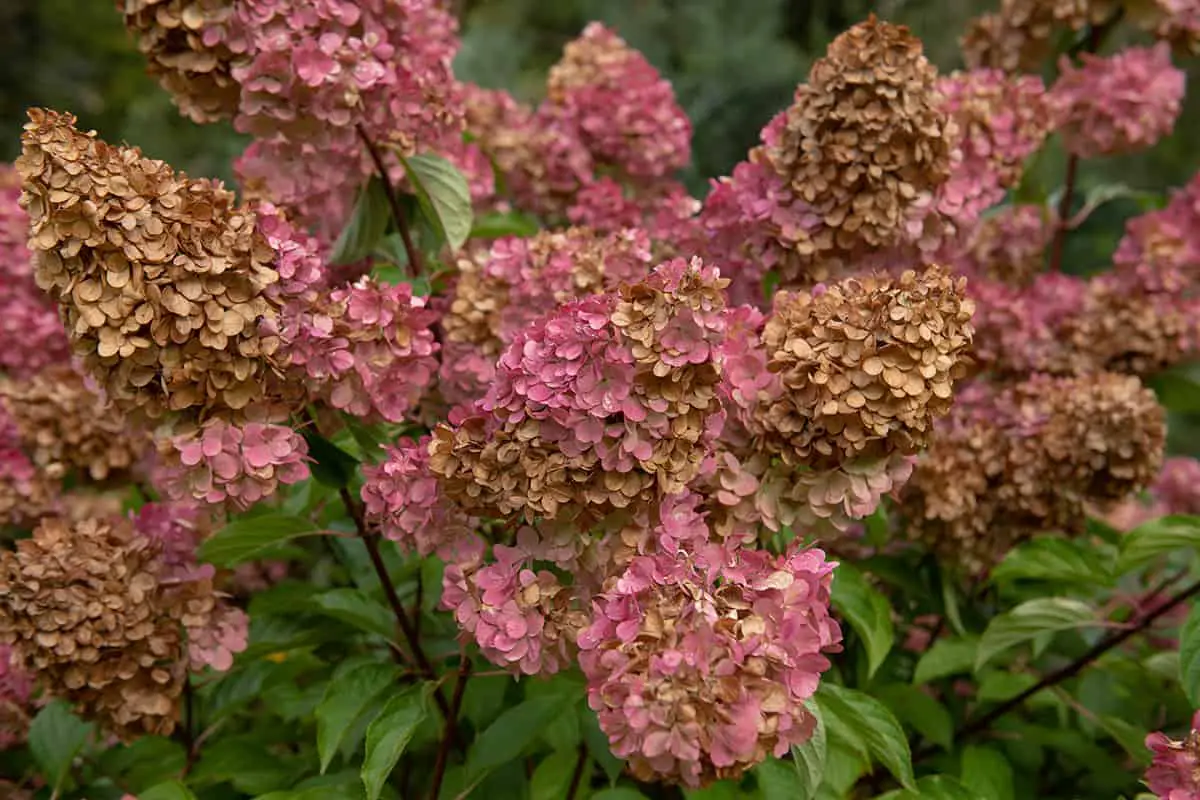
Wet flowers
If your hydrangea flowers have turned brown and are dying back then one of the most common causes is that the flowers have gotten wet. Hydrangea flowers are generally quite long-lasting, with some varieties being able to remain on the plant for many months, however, they are vulnerable to excess surface water.
The only way to handle this is by taking measures to prevent it. Once the flowers have turned brown, there is no way to reverse the process. Going forwards, be sure to water the plant at soil level so that you aren’t spraying water onto the flowers. After rainfall, you can lightly shake the stems of the hydrangea to help the water that is sitting on the petals to be removed.
Lack of moisture
If your hydrangea plant has not been watered enough, then one issue you may encounter is browning flowers. This is an easy fix; you simply need to offer the plant more water, however unfortunately the damage to the flowers has already been done, and you’ll now have to wait until next year for a second chance with your hydrangea.
If you struggle to remember to water the hydrangea often enough, you can help to prevent moisture loss from the soil by using a layer of mulch. This helps the soil retain water for longer, meaning that more moisture is available to the plant.
Time of year
Different types of hydrangeas have different blooming patterns, however, by fall all flowers on a hydrangea will be starting to fade to brown.
For some hydrangeas, such as the panicle hydrangea (Hydrangea paniculata), the brown flowers will remain on the plant for many weeks to add interest throughout fall and winter, while other types of hydrangeas will have flowers that turn brown and immediately fall to the ground.
If you don’t like the look of the faded hydrangea flowers you can prune them from the plant and discard them, but this is not necessary for the health of the plant. Even on the panicle hydrangea, the spent clusters of flowers will eventually drop to the ground once the temperature has reached a low enough level in winter.
